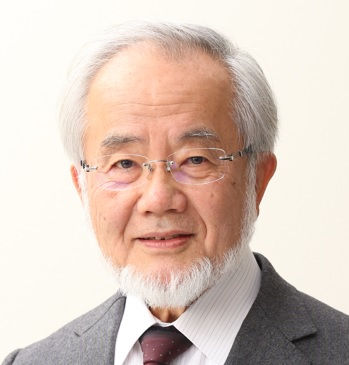Interview Symposium 2024 - Keynote Speaker: Prof. Yoshinori Ohsumi
- Roxana Resnik
- Oct 14, 2024
- 3 min read

What attracted you to the field of autophagy?
I had been studying yeast vacuoles. In the process, I first clarified that the vacuole functions as a storage compartment of amino acids by many active transporters driven by proton motive force. Vacuole has been known to be an acidic compartment. We succeeded to identify for the first time V-type ATPase, proton-pump, in the vacuolar membrane that generates the proton gradient. In 1988 I had an opportunity to start my small own lab. I was already 43 years old at the time, but I decided to take up a new research theme. The question I had, was whether the vacuole could be a lytic compartment of the cell? Since it is acidic inside and various hydrolytic enzymes are localized in, I thought it might be an organelle homologous to the lysosome in mammals. I have been interested in sporulation, the most dynamic cell differentiation process in yeast, and thought that massive degradation should occur during this drastic cellular remodeling. How I started? For long time, so often I observed yeast cells under light microscope, and knew that structure appeared in the vacuole is easily seen under conventional microscope. I tried to see yeast cells under nitrogen starvation,and found the autophagy in yeast as accumulation of vesicles in the vacuole. It was the moment which defined the rest of my life. Since then, until today, I have been trying to figure out by what mechanism this interesting phenomenon occurs.
What do you consider to be the most exciting recent discovery in autophagy?
Since identification of ATG genes essential for autophagy, my group focused to understand structure and function of Atg proteins encoded by them. What struck me most during this time was the clarification of the functions of Atg2-Atg18 and Atg9. These proteins were difficult to analyze by conventional molecular biological analysis, therefore their structure and function of them remained uncovered so long time. The evolution of structural biology has made a great contribution. There are many very exciting and wonderful findings about the physiological importance of autophagy in animals and plants. We are now understanding that every cellular component is continuously and skillfully controlled by autophagy and other degradative systems. Their breakdown must cause a variety of abnormalities and diseases. Most important message from recent studies is the recognition that synthesis and degradation are inextricably linked, life is maintained by equilibrium between them. So it is no surprise that autophagy is involved in variety of physiological phenomena. I am sure that more and more novel physiological roles of autophagy will be uncovered.
What is the career achievement you are most proud of?
I launched into a new research topic at the age of 43. I encountered the autophagy, a subject that is very deep and allows us to encounter new questions one after another. Over the next 36 years, I was able to work on molecular mechanism and physiological functions of autophagy just by using yeast. During that time, many staff members, graduate students, and post-doctoral fellows collaborated with me and made many discoveries. I am proud to say that many of them are still working on basic research. I have also been blessed with excellent collaborators.
Why do you think networks like WIA are beneficial?
We started the first international symposium, ISA, in 1997. Then many similar meetings have been organized, honestly for me it seems too many. Significance of academic conference is changing, because we can get new knowledge about research by just going to the computer every day. During the last Covid disaster, we learned that it is easy to connect each other online. However, when an international meeting is set among America, Europe, and Asia, for us, Asian countries, it mostly starts at midnight, it is really hard to participate. We, on the other hand, are now realizing the importance of face-to-face communication.
I don’t know much about how WIA is organized and about their actions to support women. In autophagy field women scientists are very active. So far 16 women researchers had worked in my lab, and most of them contributed nicely and are still working in research. I myself was not gender conscious. But in Japan there is a problem of women researchers not being treated well enough. The number of graduate students in the life sciences in Japan is adequate, but that of staff members, especially those who become professors, is very low. Another serious situation in Japan is that fewer and fewer young people are pursuing basic science research.
I believe that an international network is very important to exchange of information not
merely about scientific results, but also about the environment surrounding the researcher
and as an opportunity to get to know each other. I hope that WIA will contribute greatly to
the sound development of science in every country.


Comments